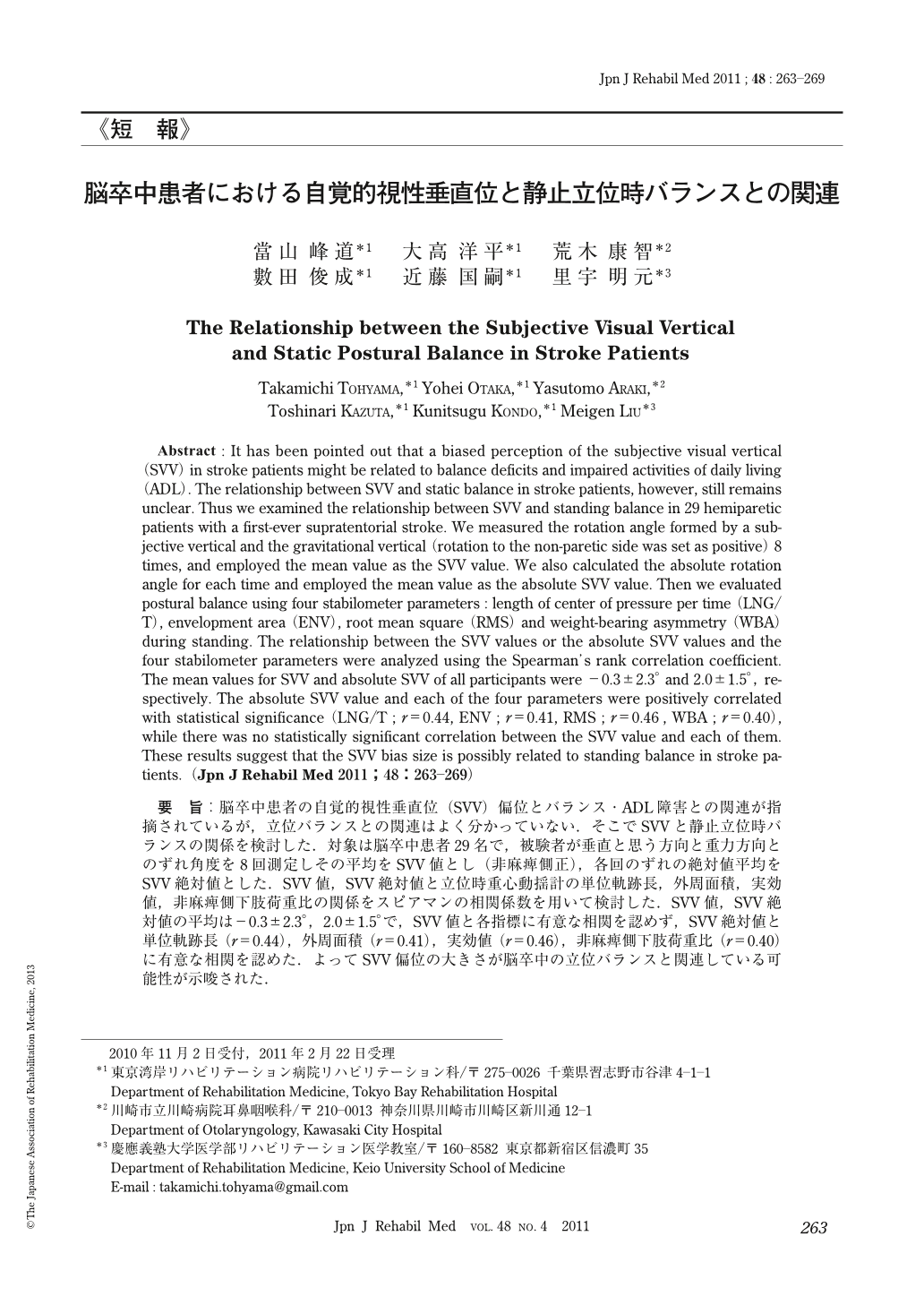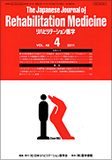Japanese
English
- 販売していません
- Abstract 文献概要
- 1ページ目 Look Inside
- 参考文献 Reference
要旨:脳卒中患者の自覚的視性垂直位(SVV)偏位とバランス・ADL障害との関連が指摘されているが,立位バランスとの関連はよく分かっていない.そこでSVVと静止立位時バランスの関係を検討した.対象は脳卒中患者29名で,被験者が垂直と思う方向と重力方向とのずれ角度を8回測定しその平均をSVV値とし(非麻痺側正),各回のずれの絶対値平均をSVV絶対値とした.SVV値,SVV絶対値と立位時重心動揺計の単位軌跡長,外周面積,実効値,非麻痺側下肢荷重比の関係をスピアマンの相関係数を用いて検討した.SVV値,SVV絶対値の平均は-0.3±2.3°,2.0±1.5°で,SVV値と各指標に有意な相関を認めず,SVV絶対値と単位軌跡長(r=0.44),外周面積(r=0.41),実効値(r=0.46),非麻痺側下肢荷重比(r=0.40)に有意な相関を認めた.よってSVV偏位の大きさが脳卒中の立位バランスと関連している可能性が示唆された.
Abstract : It has been pointed out that a biased perception of the subjective visual vertical (SVV) in stroke patients might be related to balance deficits and impaired activities of daily living (ADL). The relationship between SVV and static balance in stroke patients, however, still remains unclear. Thus we examined the relationship between SVV and standing balance in 29 hemiparetic patients with a first-ever supratentorial stroke. We measured the rotation angle formed by a subjective vertical and the gravitational vertical (rotation to the non-paretic side was set as positive) 8 times, and employed the mean value as the SVV value. We also calculated the absolute rotation angle for each time and employed the mean value as the absolute SVV value. Then we evaluated postural balance using four stabilometer parameters : length of center of pressure per time (LNG/T), envelopment area (ENV), root mean square (RMS) and weight-bearing asymmetry (WBA) during standing. The relationship between the SVV values or the absolute SVV values and the four stabilometer parameters were analyzed using the Spearman's rank correlation coefficient. The mean values for SVV and absolute SVV of all participants were -0.3±2.3° and 2.0±1.5°, respectively. The absolute SVV value and each of the four parameters were positively correlated with statistical significance (LNG/T ; r=0.44, ENV ; r=0.41, RMS ; r=0.46, WBA ; r=0.40), while there was no statistically significant correlation between the SVV value and each of them. These results suggest that the SVV bias size is possibly related to standing balance in stroke patients.

Copyright © 2011, The Japanese Association of Rehabilitation Medicine. All rights reserved.


